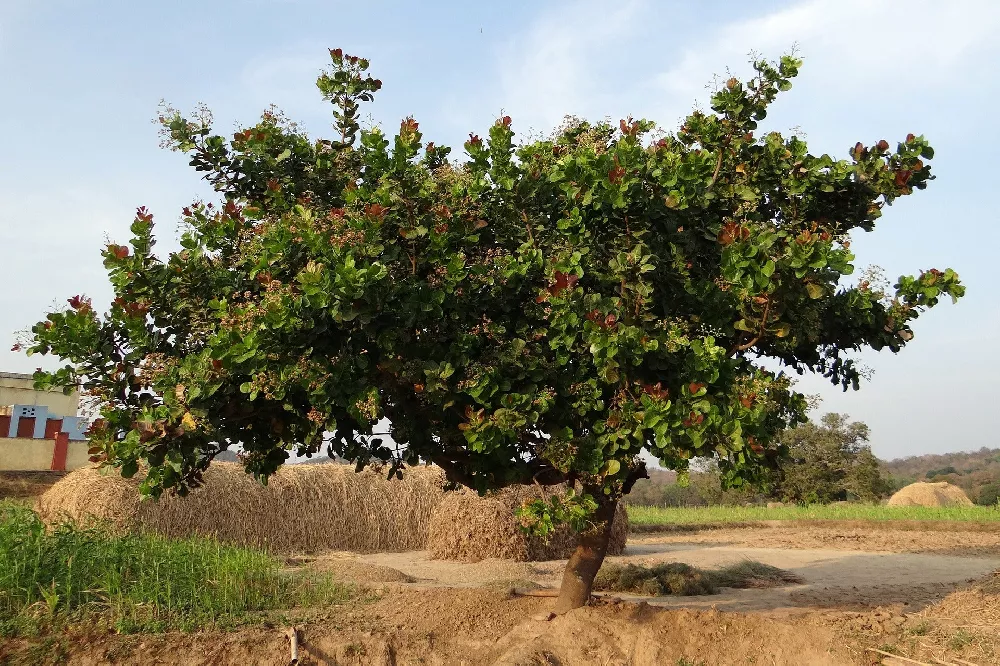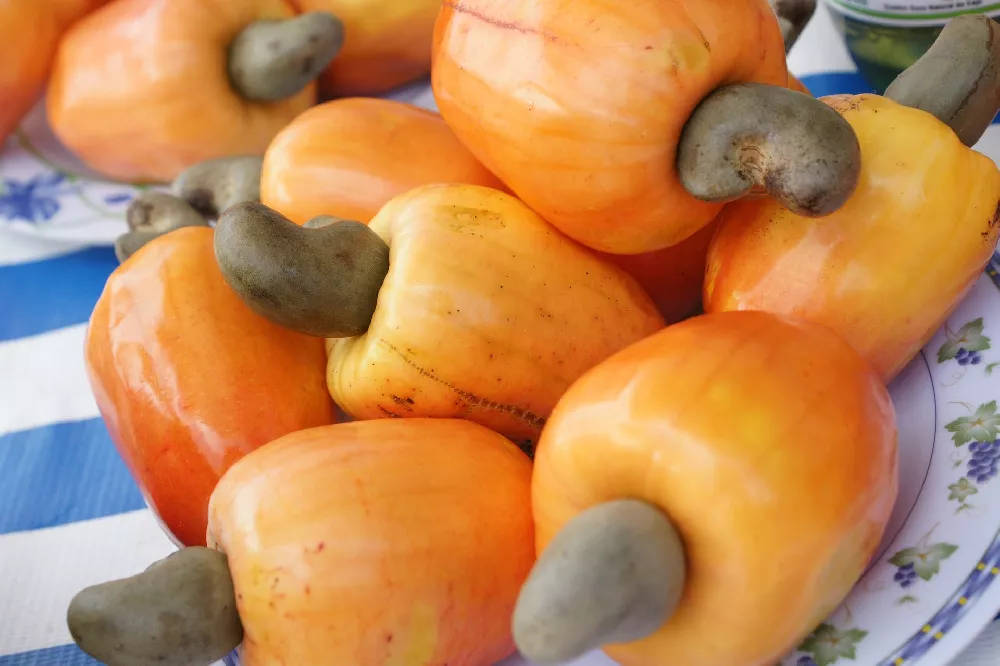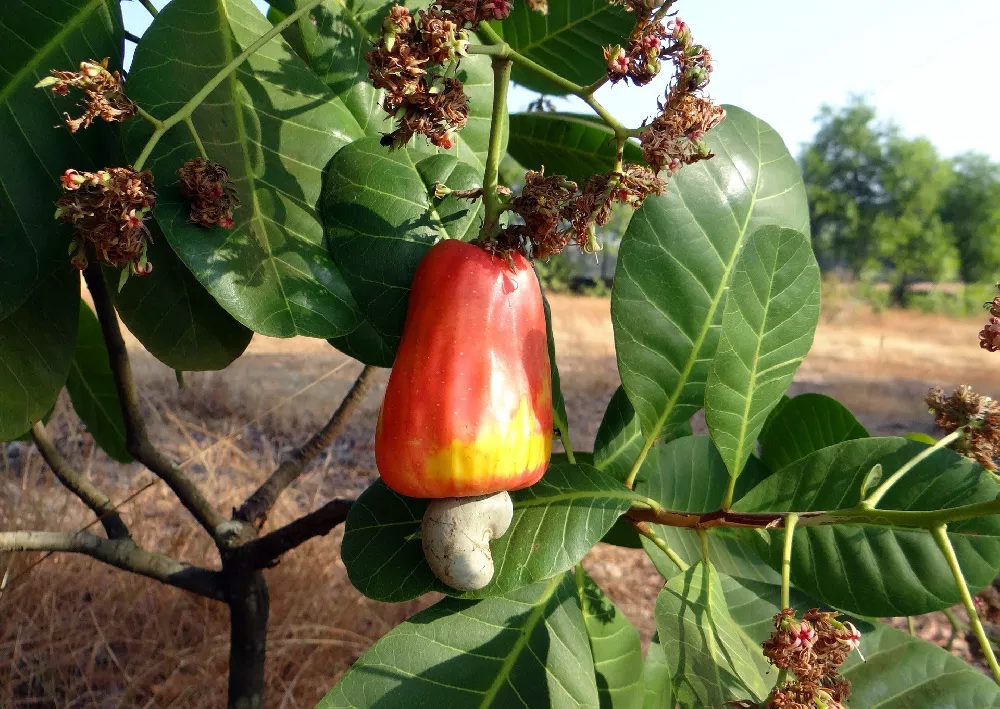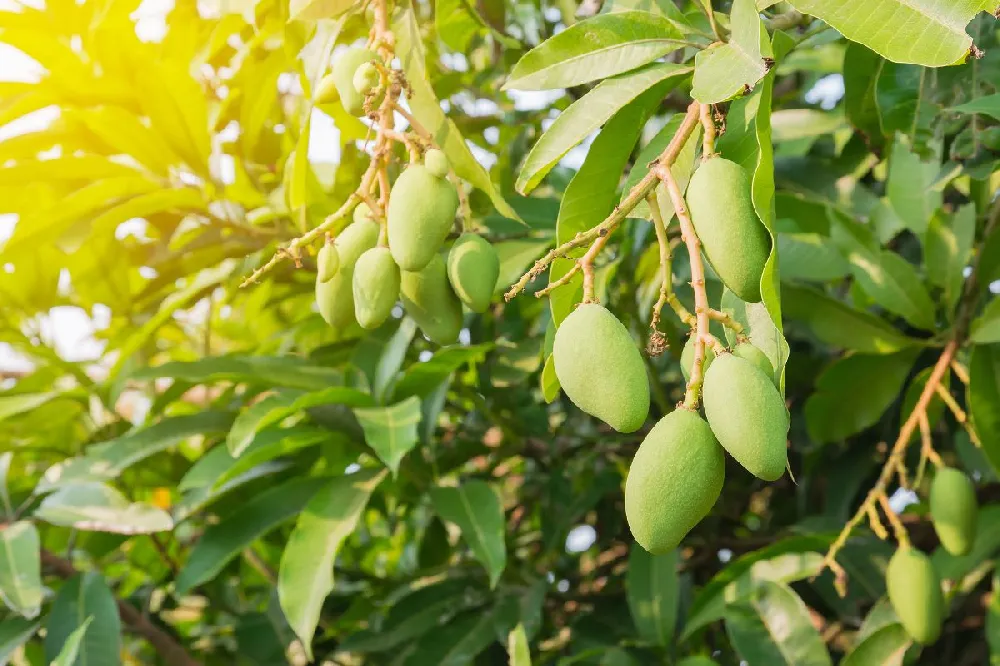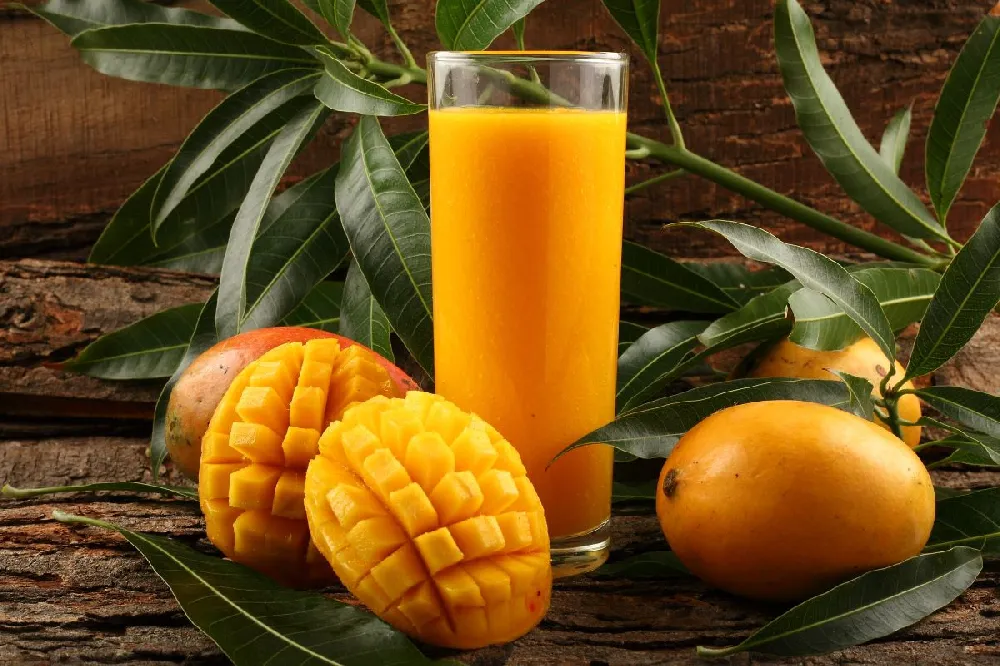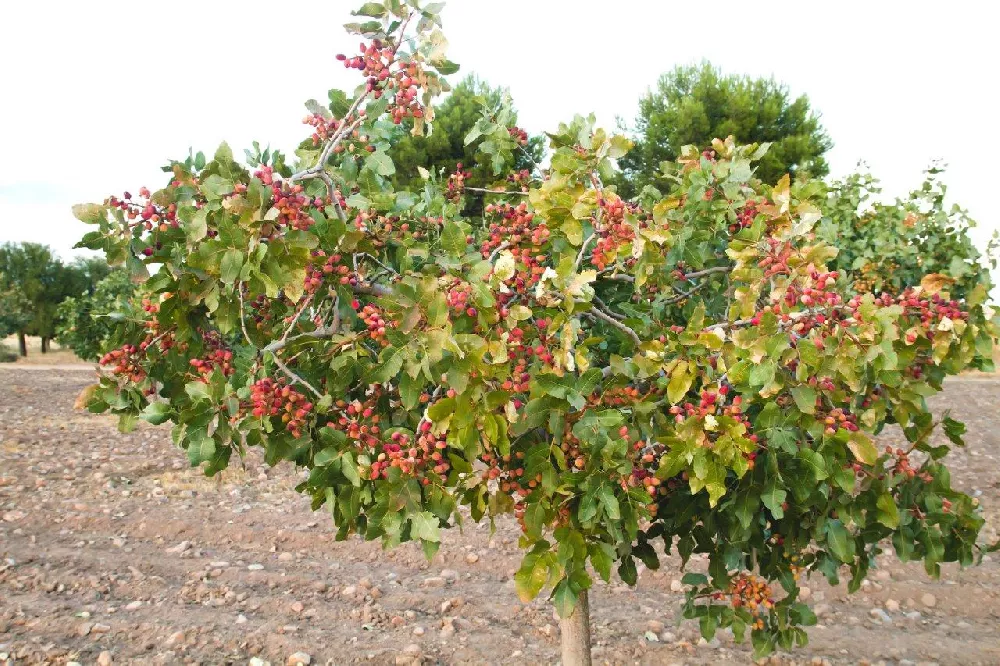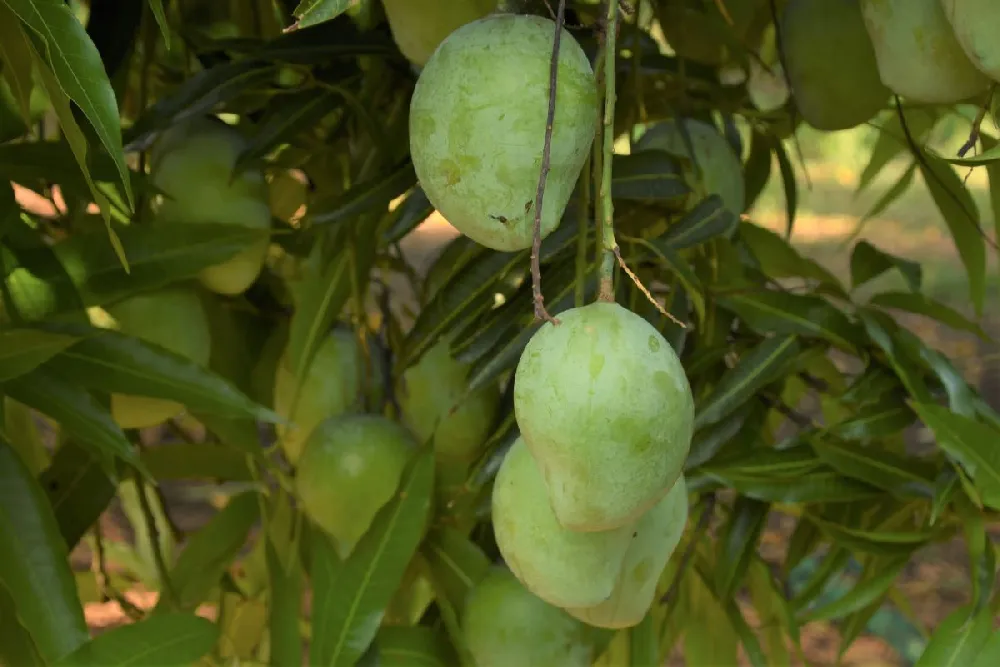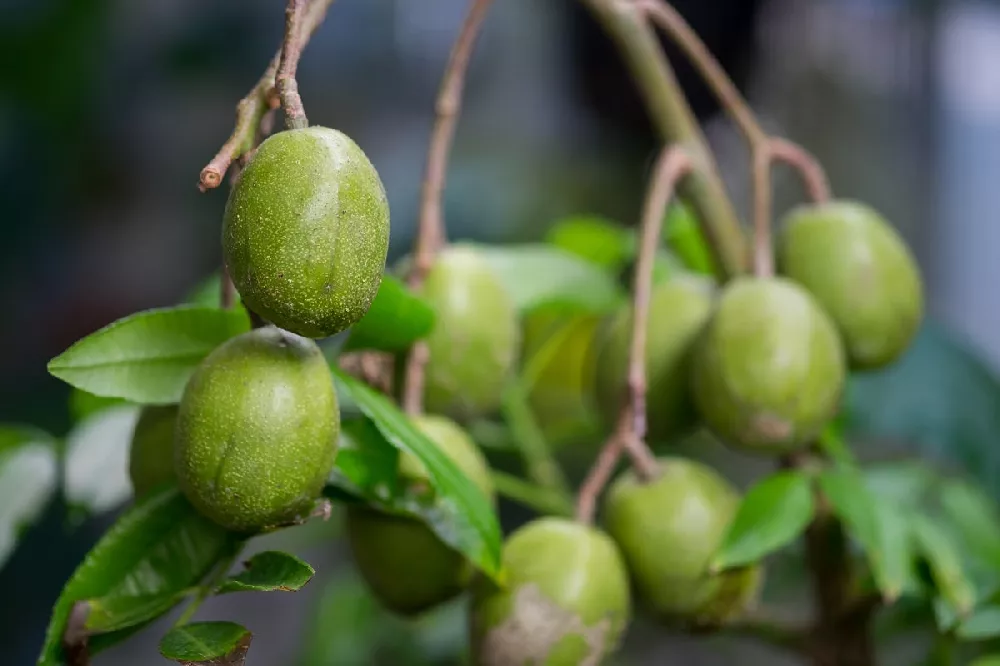- Home >
- Nut Trees >
- Cashew Tree
Cashew Trees for Sale - Buying & Growing Guide
Anacardium occidentale or cashew trees are flowering evergreens that are native to Brazil. They are valued as both an ornamental garden addition as well as for their fruit and nut production. Cashew trees thrive in tropical areas and are low-maintenance once established. Gardeners in India have cultivated cashew trees since the 1500s. Here are some reasons you may choose to grow them too:
- Cashew trees have large, attractive leaves with delicate pink flowers.
- Both nuts and fruit come from the “Anacardium occidentale” cashew tree.
- You can expect your first harvest within 2 to 3 years of planting your tree.
Enter your zip code to find nearby stores that may carry this plant.
Plant Care
Sunlight

Cashew trees need full sun, at least 8 hours of direct light a day.
Watering
Water trees weekly during the growing season; less during winter. Avoid overwatering, which causes root rot.
Fertilizing

Feed during the growing season with a slow-release product. Apply compost or manure in spring.
Planting and Care
Planting instructions
Choose a sheltered location that receives a minimum of eight hours of sunlight a day. Trees that don’t get enough sun will have a low production rate. Frost-free south or west-facing spots are preferable. The cashew tree prefers well-draining, sandy soil where its roots can spread. They don’t like wet feet or cramped roots. Soil pH isn’t critical, but the trees do best when it is in the 5 to 6.5 range. Space your trees about 30 feet apart as they can reach up to 40 feet tall.
Prepare your spot by breaking up the soil and removing large clumps, stones, and any grass or weeds. You can also use this time to amend and enrich your soil by adding some organic material or compost.
Dig a hole slightly deeper than the tree’s root ball and twice its diameter. Try not to disturb the tree’s root system when placing it in the hole, with the top level with the soil. Begin backfilling while tamping down the soil to remove air pockets. When halfway full, fill the hole with water and allow it to drain. Continue backfilling until the top of the root ball is even with the surrounding soil. Young cashew trees require support. They need a stake or something similar to keep them growing straight and from toppling over. Once staked, water again deeply. A two to three inch layer of mulch around the tree’s base will provide extra protection and moisture retention.
Watering and nutrients
Cashew trees are drought-tolerant, but to get a good crop, water them regularly. Young trees and ones that are fruiting need more water, especially during a dry spell. Water young trees at least weekly to help them become established. Don’t allow the soil to become soggy from overwatering, as root rot could occur.
Use a high-quality fertilizer that contains phosphorus, nitrogen, and zinc. Zinc deficiency is a common problem for cashew trees. Adding homemade compost can help replenish it. Feed your tree while it is flowering and forming fruit in the spring and summer. Follow the manufacturer’s directions regarding dose and schedule.
Pollination
Cashew trees are self-pollinating, meaning they don’t need a second tree to fruit. However, a second tree in the area will help both trees produce a larger harvest. Cashews are aided with the pollination process by bats and several types of insects.
Pruning
Cashew trees require more of a maintenance type pruning than a production one. You must remove any sprouts or suckers that shoot up from the base of your sapling the first year. They rob the tree of vital nutrients needed for that initial growth. Remove broken, dead, or diseased branches any time of the year. This also goes for branches that are crossed or rubbing on each other. Removing the heavier growth allows for more airflow and gives the fruit more room. If pruning for shape or aesthetics, don’t prune until late summer or early fall.
Pests, diseases, and animals
If kept healthy, cashew trees will remain mostly problem-free. Pests like blossom webbers, borers, leaf miners, and thrips may occasionally attack them. Control most of these insects with insecticides.
Anthracnose, black mold, and leaf spot are all fungal diseases that can appear on your cashew tree. Treating the tree with a suitable fungicide will help control the outbreaks.
Cashew blossoms and cashew apples attract bats and wild birds. The only way to keep them from sharing in your harvest is to net the tree.
Harvesting
Aside from birds tasting the fruit on your tree, the changing color will alert you to harvest time. The apples start turning pink to red. The cashew nut’s shell will turn a dark, dull gray color. Fruit falling to the ground is another indicator of ripeness.
Separate the nut from the apple. You can enjoy the cashew apple fresh, frozen, or in various recipes. The nuts need to be removed from their shell, but they easily keep for about two years. This is convenient when you’re harvesting several batches over time. Continue reading below to learn how to process your cashew nuts safely.
FAQs
Does the cashew tree produce both fruit and nuts?
Most people don’t realize that there is more than just the nut to look forward to when growing a cashew tree. The “Anacardium occidentale” cashew tree also produces edible fruit known as the cashew apple. It is often eaten fresh, dried, juiced, or used in jellies and other fruit preparations.
Can I grow cashew trees from seed?
Most gardeners start with a grafted tree or a stock seedling from a nursery. If you want to grow one from seed, keep in mind that it is unlikely that your seed will grow true to the parent. The quality and the quantity of the fruit and nut may not be as good.
Can I still grow a cashew tree if I don’t live in the tropics?
It is still possible for gardeners who live in cooler climates to grow and enjoy cashews. If you are in an area that rarely drops below 50 degrees Fahrenheit, give a cashew tree a try. Just keep in mind that you will have to provide cover and protection during any cold spells, and that a deep freeze will most likely kill your tree, even with that added protection.
How do I process the cashew nut?
Practice caution when processing your cashew nut harvest. The shell surrounding the nut is filled with acidic oil that can burn or irritate your skin. It is wise to wear safety glasses, gloves, and long sleeves when processing the nuts. The easiest and safest method is to freeze the shells. Once they are frozen, the shell can be safely opened and the nut removed.
